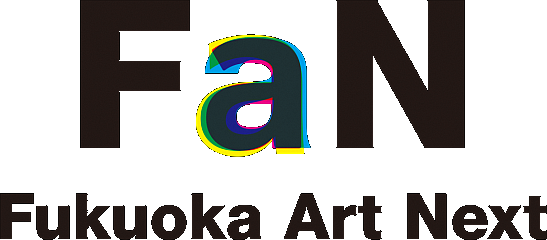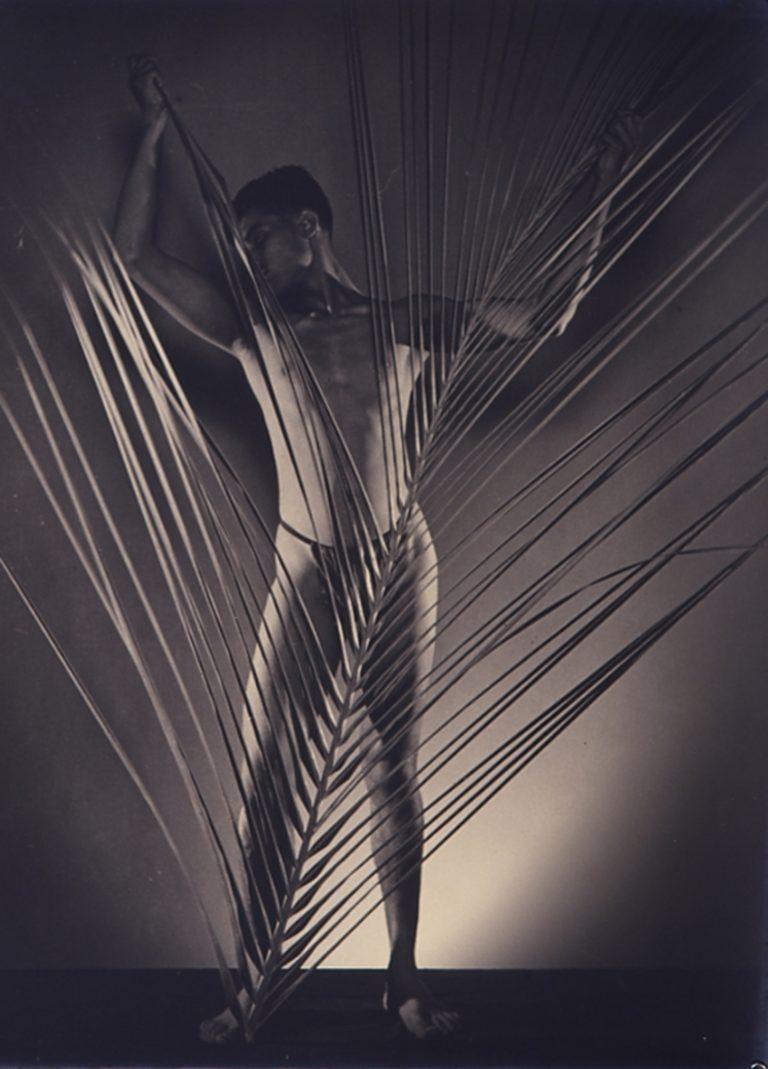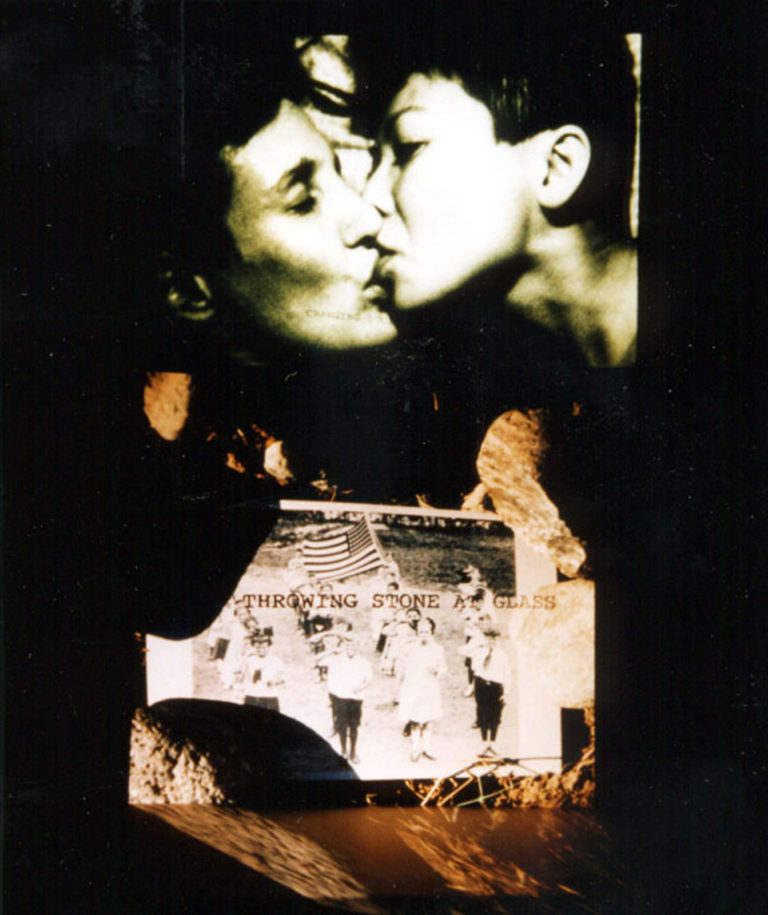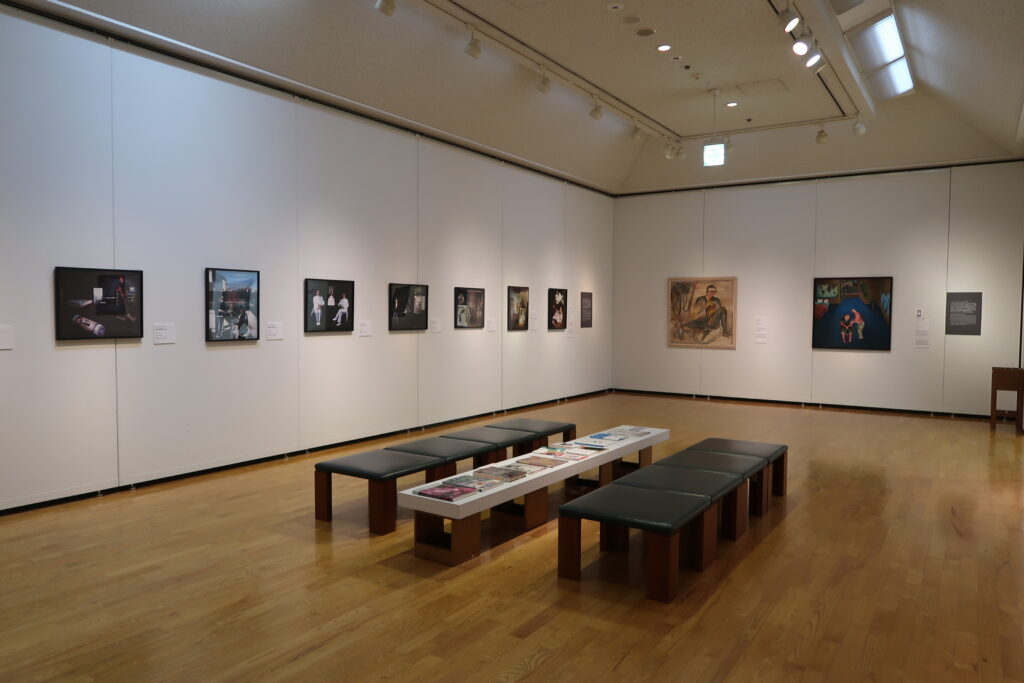
LGBTQ and Social Diversity in Asian Art
- Period
- Dec 2, 2019 〜 Mar 17, 2020
- Venue
Asia Gallery
Foreword
In April 2018, Fukuoka City launched the partnership program for respecting the partnership of sexual minorities. Fukuoka became the seventh city in Japan, the second after Sapporo in the twenty ordinance-designated cities, and the first in Kyushu to implement the program.
This exhibition commemorates the Fukuoka’s partnership program by introducing the works created by the LGBTQ artists as well as the works dealing with the issues surrounding social diversity in contemporary Asia.
The first part of the exhibition covers photographic works from the 1930s when the term “LGBTQ” was not recognized yet, paintings from the 1970s under the influence of LGBTQ social movements in western countries, and photographic and sculpture works from the 1990s and 2000s when the term LGBTQ became widely shared by the people worldwide.
The second part features the works vividly depicting the people on the margins of contemporary society including migrant workers and foreign brides. This section introduces the works created after the 1980s using the frame of social diversity, creating the society that respects the differences and denies any form of discrimination and alienation.
Through the works of LGBTQ artists and the works that discuss the social diversity, this exhibition seeks to cultivate our understanding of those who are framed as minorities and question who, then, are the majority and what it is to be a majority.
Reference
Fukuoka City, LGBT Kiso Chishiki (Introduction to the LGBT), Available:
https://www.city.fukuoka.lg.jp/shimin/jinkenkikaku/life/lgbt/lgbt_reaf.html
Ishida Hitoshi, Hajimete Manabu LGBT—Kiso kara Torendo made (LGBT for the Beginners—From Basics to the Recent Trends), Tokyo: Natsumesha, 2019
Fukuoka Prefecture Human Rights Research Center, Liberacion—Jinken Kenkyu Fukuoka (Liberación—Human Rights Research Fukuoka), Fukuoka: Fukuoka Prefecture Human Rights Research Center
About LGBTQ
“LGBTQ” is a term widely used since the 1970s to describe types of sexual minorities. Before understanding the term, we must start from four types of sexualities that we all share.
1. Sexuality on an official document like birth certificate → Biological sex
2. How a person thinks of their gender → Gender identity
3. How a person thinks of themselves in terms of to whom they are romantically attracted → Sexual orientation
4. The way in which a person expresses their gender identity → Gender Expression
Among the above four elements, human sexualities are defined as the combination of “gender identity” and “sexual orientation” and various types of sexualities are possible depending on how these two are combined and how they are expressed. LGBTQ are types of sexualities that can be defined in the following ways.
L (lesbian): A person whose gender identity is female and is attracted to a female.
G (Gay): A person whose gender identity is male and is attracted to a male.
B (Bisexual): A person attracted to both genders.
T (Transgender): A person with a gender identity different from their sex assigned at birth
Q (Queer/Questioning): Queer is an umbrella term for sexual minorities. “Q” also stands for “Questioning,” those who are unsure about their gender identity/sexual orientation and those who intentionally avoid being labeled in one way or the other.
*People attracted to people of the opposite sex are called “heterosexual” and people whose gender identity matches the sex that they were assigned at birth are called “cisgender.” More than 90% of the world population belongs to these.
There are sexual minorities still excluded from the term “LGBTQ.” For instance, “intersex” is a person whose sexuality cannot be defined biologically. “Asexual” is a person without sexual attraction to others.
Lately, the term “LGBTQ” is replaced with “SOGI (Sexual Orientation and Gender Identity)” to be more inclusive. The term SOGI was developed based on the understanding that people’s sexual orientation and gender identity cannot be considered as categories, but they vary depending on the person.
Reference
Fukuoka City, LGBT Kiso Chishiki (Introduction to the LGBT), Available:
https://www.city.fukuoka.lg.jp/shimin/jinkenkikaku/life/lgbt/lgbt_reaf.html
Ishida Hitoshi, Hajimete Manabu LGBT—Kiso kara Torendo made (LGBT for the Beginners—From Basics to the Recent Trends), Tokyo: Natsumesha, 2019
Fukuoka Prefecture Human Rights Research Center, Liberacion—Jinken Kenkyu Fukuoka (Liberación—Human Rights Research Fukuoka), Fukuoka: Fukuoka Prefecture Human Rights Research Center
Hara Minata and Dohi Itsuki ed., Niji-iro no Hondana—LGBT Book Guide (Rainbow Bookshelf—LGBT Book Guide,
Tokyo: San-Ichi Shobo, 2016
Association for the LGBT Law ed., Nihon to Sekai no LGBT no Genjo to Shakai Kadai—SOGI to Jinken wo
Kangaeru (Current Situations and Issues of LGBT in Japan and World—Thoughts on SOGI and Human Rights,
Kyoto: Kamogawa Shuppan, 2019
| Venue | Asia Gallery |
|---|---|
| Admission | Adult 200 yen / College & High School 150 yen |
| Gallery Opening Hours | Sundays to Thursdays 9:30 - 18:00 |
| Organiser | Fukuoka Asian Art Museum |
| Contact | Fukuoka Asian Art Museum / 092-263-1100 |
| Remarks | Close: Wednesdays |





-768x507.jpg)
_越境/文化アイデンティティ―アジアから来た花嫁の歌(Ⅱ):黄氏戀とその娘(A)(B)-768x768.jpg)






